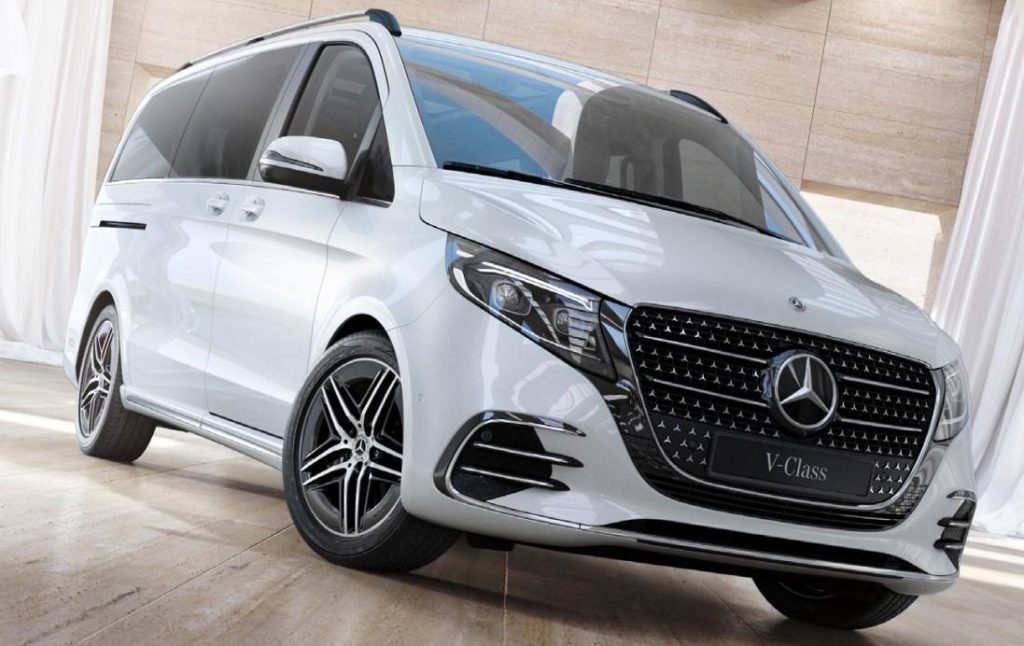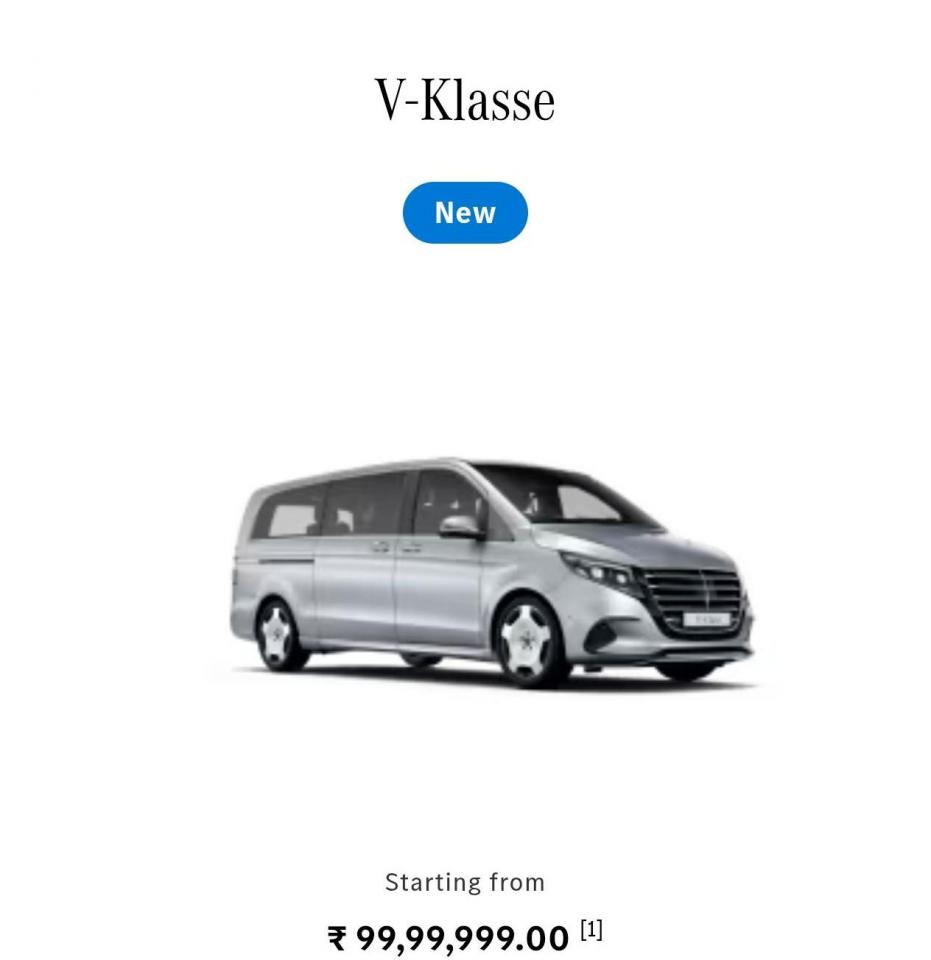There has been renewed buzz in the Indian luxury-MPV space around the Mercedes-Benz V-Class, making a return (or fresh launch) in India.
Below is a consolidated look at what is known so far, what the expectations are, and what challenges lie ahead — based on recent news, reports, and experience.
Background & Recent Developments
Mercedes-Benz first introduced the V-Class in India in January 2019 as a luxury MPV via import (CBU route). It was offered in two trim lines:
- Expression (7-seater, long wheelbase) — priced around ₹ 01 Crore (ex-showroom)
- Exclusive (6-seater, extra-long wheelbase) — priced around ₹ 99 lakh
However, sales were niche, and the V-Class was discontinued in India around 2022.
In 2025, Mercedes previewed its Vision V electric MPV concept, built on a new “VAN.EA” electric architecture, which is expected to influence the next generation of the V-Class and other all-electric MPVs. This suggests that any future V-Class in India could be more electrified (or have hybrid/electric options) rather than a pure-diesel import.
Meanwhile, Indian auto-enthusiast circles (for example, on Team-BHP) are reporting that the 2025 Mercedes-Benz V-Class (or V-Klasse) is listed on Mercedes’s global site and speculated to be headed for an Indian launch soon. Also, auto news portals like CarDekho have mentioned that the latest V-Class could go on sale in India by May 2024, with prices possibly starting around ₹1 crore (ex-showroom) — though that date is now evidently outdated.
So, in short, the “launch soon” talk seems to refer to a revived, possibly updated version of the V-Class (or electric variant) coming to the Indian market in a fresh avatar.
What to Expect: Features, Powertrain & Positioning
Powertrain & Electrification
Because of the Vision V and Mercedes’s broader electric roadmap, one expects the new V-Class to be available with electric or hybrid powertrains (or at least a cleaner diesel/EV mix). The previous V-Class in India used a BSVI-compliant 2.0 / 2.1-litre four-cylinder diesel mated to a 7-speed automatic. A next-gen model is likely to see more modern powertrain options (e.g., electric drive, modular architecture, better efficiency).
Design & Technology
The Vision V concept shows a more futuristic, refined, and electrified approach: illuminated Mercedes star, closed-off grille, minimalist surfaces, expansive glass, lounge-style rear interior layout, and large integrated displays. The new-generation V-Class might take cues from this in styling, infotainment, and interior layout.
Expect features such as:
- Multiple seating configurations (4-, 6-, or 7-seater)
- Luxurious materials, ambient lighting, and modular seats
- Large infotainment screens, connected features
- Advanced driver aids, safety systems
- Possibly electric sliding doors, panoramic roof, etc.
Pricing & Launch Timing
Analysts and media sources project a launch sometime in 2025 or by mid-2026 in India. For example, V3Cars expects a 2026 launch in India, with ex-showroom pricing between ₹99 lakh and ₹1 crore.
Given import duties, taxes, and the niche nature of luxury MPVs in India, the new V-Class would likely be priced at a premium. If electric variants are included, they may carry additional premiums due to battery costs and EV taxation.
Competitive & Market Positioning
In India, there is little direct competition in the ultra-premium luxury MPV/van segment. The V-Class, in its previous iteration, catered to elite family buyers, premium hotels, airport shuttles, VIP/fleet operators, etc.
However, newer entrants like the Toyota Vellfire (if launched locally), premium SUVs with three rows (e.g, Mercedes GLS, BMW X7), and luxury EV SUVs will also compete for the same wallet share.
Given that India is a high priority for Mercedes, with growing demand for its top-end vehicles and expansion into smaller cities, a revived V-Class could fit into a broader growth strategy.
Challenges & Risks
- Cost & Pricing: Importing or building a niche large MPV will be expensive. To justify pricing in excess of ₹1 crore (or close), the V-Class must deliver exceptional value, features, or exclusivity.
- Market Demand: Ultra-luxury MPVs have limited appeal. Buyers often prefer SUVs over vans in India. Sustaining volumes will be difficult unless there’s a clear niche (e.g., premium fleet, hotels, VIP transport).
- Infrastructure & Service Support: For an electric or hybrid model, charging infrastructure, battery servicing, and dealerships must be ready. For large vehicles, parking and maneuverability in Indian cities can also be a challenge.
- Regulation & Import Duties: High import tariffs, local regulations, and tax structure might affect price and profitability. Localization might help, but only if volumes justify it.
- Internal Cannibalisation: Mercedes must ensure the V-Class does not cannibalize sales of its high-end SUVs or sedans while still offering a distinct value proposition.
Conclusion
The talk of “Mercedes-Benz V-Class India Launch Soon” seems plausible in the context of recent signals — Mercedes previewing electric MPV concepts (Vision V), global listings, and auto-enthusiast speculation. But this won’t likely be a straight reintroduction of the 2019 model; rather, it is expected to be a substantially upgraded, possibly electrified successor aimed at a niche premium MPV/van segment in India.
If Mercedes plays its cards well — in positioning, pricing, features, and support — the new V-Class could carve out a luxury niche in India. Yet it must overcome cost, market size, infrastructure, and perception challenges. If you like, I can track and update you when an official announcement arrives (with specs, launch date, and variants) — do you want me to do that?


